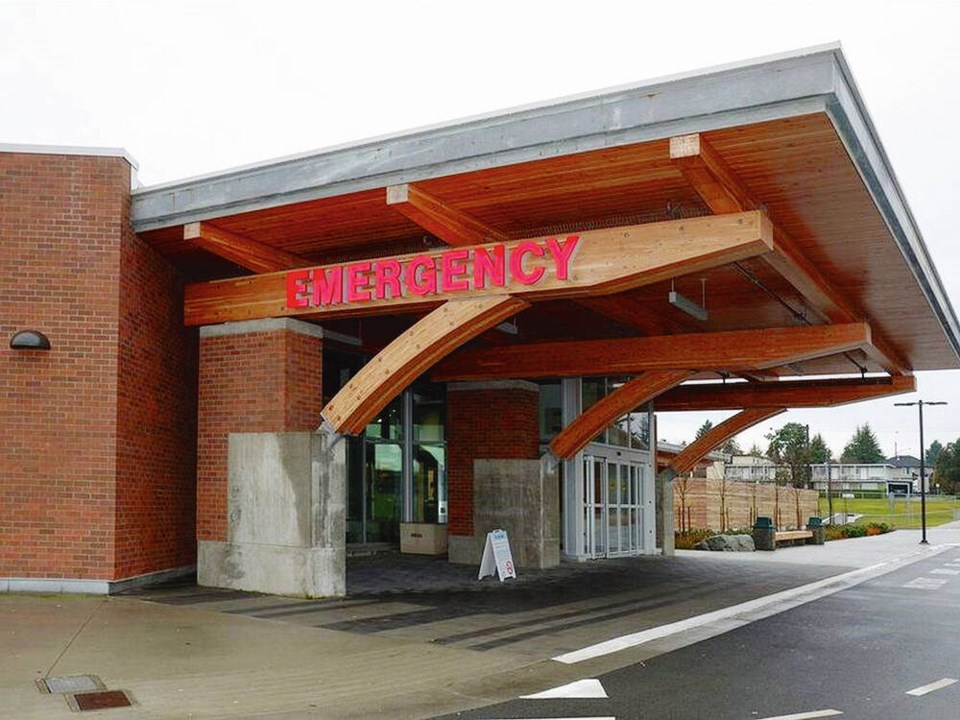Pressure is again mounting in Nanaimo for a new patient tower and catheterization lab, says Mayor Leonard Krog.
While Nanaimo’s hospital can offer those who’ve suffered a major heart attack what’s called thrombolysis — medication to dissolve clots in arteries — in a catheterization laboratory, doctors can perform procedures including opening up blocked arteries and inserting a stent.
Krog said the need for a new patient tower, cath lab and complex care and detox and recovery spaces were among topics brought up at the Association of Vancouver Island and Coastal Communities convention in Victoria over the weekend.
“Nanaimo is one of the five fastest-growing places in the country,” said Krog. “We do have an aging population. We have an old hospital.”
Health Minister Adrian Dix noted on Friday that there are only five catheterization labs in the province, with a sixth being built now for Surrey Memorial Hospital. “We can’t have cardiac catheterization in every community,” said Dix, though he said Nanaimo is one of the communities that would be considered for one.
Krog said those who live in Surrey are within 15 minutes to half an hour of cath labs all over the the Lower Mainland, while Nanaimo residents and those on the north Island need to take a trip across the Salish Sea by helicopter or 90 minutes by ambulance to Victoria.
In the legislature Thursday, Independent Parksville-Qualicum MLA Adam Walker cited examples of Nanaimo Regional General Hospital “bursting at the seams.”
“Our hospital has capacity for 346 patients, yet last month we saw 447 patients accommodated,” said Walker. “That’s over 100 patients in hallways, corridors, broom closets, anywhere they can fit them … the chapel downstairs has patients in it.”
Walker said heart attack victims are dying without the chance of getting to a catheterization lab in Victoria. He cited a physician’s account of three male heart-attack patients in their 50s and 60s who recently went to Nanaimo Regional General Hospital, one of whom died due to what Walker said was a lack of heart catheterization facilities on the Central Island.
“Were they living in Victoria would have had a very different level of care than they did because they live in our area,” Walker said in an interview.
During a council meeting April 8, city councillors heard from Donnai Hais, a community liaison for the hospital’s medical staff, about the newly formed Fair Care Alliance, which argues that Nanaimo has the busiest ER on the Island, a 61-year-old hospital, one on-call internist for more than 400 hospital patients, two cardiologists compared to 22 in Victoria, and no oncologists — making the argument that “half of the Island population gets 1/5th of the health resources.”
The group also has an online petition demanding “a rectification to the severe inequality of healthcare on Vancouver Island for the 460,000 citizens living north of the Malahat.”
Dix said last week that the province is making unprecedented investments in Nanaimo — a new ICU was created, new intensive care beds are underway, and a seniors facility in Lantzville to serve the central Island has been announced
“I would say, with great respect, there has never been so much investment in health care in Nanaimo,” he said.
“They need long-term care beds — we’re doing that. They’ve never had cancer care — we’re doing that. They had the worst ICU in the country — we built a new ICU. We’re going to continue to work at building out health care in Nanaimo.”
Dix is scheduled to make an announcement at Nanaimo Regional General Hospital Tuesday related to cancer care.
Krog says whatever the announcement is, “if it takes us even down the road one step I will be very pleased … it’s wonderful news.”
He said with his wife having survived two bouts of cancer and having to be treated in Victoria and Vancouver, he knows what it would mean to have a cancer centre close to home.
“If it’s an announcement of funding for the first step of the process, it’s a very good news announcement for Nanaimo — I’m ecstatic,” he said.



